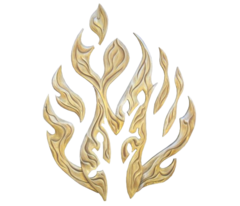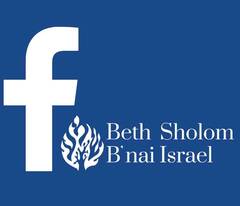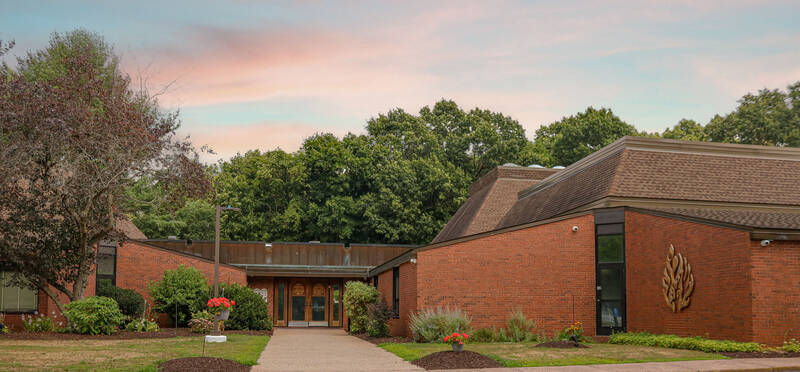Shemini Atzeret 5784 October 7th, 2023
Shabbat Shalom and Hag Sameach
Peggy Newton is the chair of the Woodbridge Farm committee that oversees the historic farmstead just down the road, the farm where we go to observe Tashlich on Rosh Hashana. It has a beautiful stream that runs through it and every year, when I ask permission to use the stream she always lets me know how high the water is running. If we have had a long dry spell, she lets me know that the stream is running low. One year we had so much rain that the stream overflowed its banks and flooded the entire Manchester Green. We had to be very careful since they did not have enough time to get the stream banks fixed up again. This year we had a rainy July and August, so the stream is running at full capacity.
I am sure that in colonial times, the capacity of the stream was of great importance to the farmers who worked Woodbridge farm. The amount of rain would be an early indication of the success of the crops and how much food there would be for the winter. Farmers are among the most sensitive occupations that rely on the weather. For most of us, rain is just something that spoils our plans and makes driving difficult. In farm country, rain means a successful year where crops can be sold at a good price and everyone will prosper from the bounty.
I learned recently that the lost colony in Virgina, established by Sir Walter Raliegh, had the misfortune of establishing itself during a severe drought on the east coast of North America. It is little wonder that the crops they planted failed year after year until the entire colony had died or disappeared into the wilderness.
Bex Stern Rosenblatt, a teacher at the Conservative Yeshiva in Jerusalem describes the scene as Moses explains for the last time, how things will be different once they leave the desert. She sets the stage for us when she writes:
“Standing here, on the edge of the coming holidays and on the edge of Canaan, we look forward towards water. On Shemini Atzeret, we will begin to recite “who brings down the rain” in the Amidah, welcoming rain back into our lives also with the beautiful Tefillat HaGeshem. Looking out towards the Jordan in Deuteronomy, we reimagine our relationship with God using rain as both metaphor and reality.
As we enter a land where we will become farmers, our water needs will change dramatically. In order to receive the water we need to survive, we will need to recognize constantly that God is the source of all water. This land is “a goodly land, a land of brooks of water, springs and deeps coming out in valley and in mountain,” as opposed to our forty years in “the great and terrible wilderness… where there is no water” in which God has had to bring “water out for you from flintstone.” Unlike Egypt, in this land “from the rain of the heavens you will drink water.” That rain is, of course, contingent on heeding God’s commandments, “to love the LORD your God and to worship Him with all your heart and with all your being.” The Book of Genesis was replete with famine in Canaan, where lack of water may have caused mass starvation. Now that we are back in that land, God has given us the key to avoiding starvation, to avoiding having to leave the land in search of food. We just have to follow the commandments and God will grant us water and God will be to us as water.
When the Israelites were slaves in Egypt, they did not worry about if the rains came or not. Egypt depends to this day on the Nile river to provide the water it needs. The rain that feeds the river, the second longest river in the world, falls far to the south in East Africa. The Nile is a sure source of water and one of the duties of an ancient slave was to lift the water from the Nile and spill it into the irrigation ditches that watered the Egyptian fields. The bounty of Egypt was limited to how far they could let the water flow to the crops. Once that limit was reached, the rest of the land was pure desert.
When our ancestors left Egypt, there would be no Nile river to irrigate the crops. In Canaan, in the Promised Land, water would come from the rain and from springs of water that would flow from the mountains. When the rains did come, there was plenty of water from the sky and the ground to water the crops. When the rains failed, both the water from above and the water from the ground would dry up and the food supply would be in peril.
This is why Moses warned the people not to do things that might anger God. Such actions might cause God to shut up the heavens so that there would be no water. No water – no crops- no food for the winter. Famine in ancient Israel was a real possibility and several biblical books note that God brought famine to the land because the people began to slip into idolatry, and forgot the God that brought them out of Egypt.
The climate in Israel is similar to the climate of Southern California. There is a set rainy season and a set dry season. The rains come in November as if someone turned on a spigot, and by the end of March, the spigot is turned off. During that rainy season, the cisterns are filled again with water, the aquifer is replenished and the snow on Mt. Hermon on the border with Lebanon will feed the Jordan River for the rest of the year. In modern Israel, not only do Israelis watch the weather reports, but they also monitor the level of the Kineret, the Sea of Galilee, so they will know if there will be enough water for the dry season.
Shemini Atzeret occurs on the calendar just before the rainy season begins in Israel. We don’t really pray for Rain on this holiday because if it rained on this holiday in ancient time, it would make the roads all muddy and people would have a hard time getting home from their pilgrimage to Jerusalem. The actual prayers for Rain will begin more than a month from now, so that everyone may be able to get home safely. We who don’t live in Israel will start our prayers for rain on December 4th. Why December? that is a very long story and I will teach that lesson when December 4th is near.
Shemini Atzeret is the time we pause to show our gratitude for water. It is water that makes life on this planet possible and all creatures, including human beings, are created mostly from water. We can live sometimes for a week or longer without food. We can’t last more than a few days without water. Water is a blessing that often we overlook because it is such a constant presence in our life. In Judaism, water is one of the symbols of God. The prophets wrote, “Let Righteousness flow like water, and Justice like a mighty stream. In the desert, it was God who brought the thirsty people water from the Rock. We all know that God provided manna for the people to eat but there also was a miraculous well of water that, because of the righteousness of Miriam, Moses’ sister, followed them wherever they traveled in the desert. The water from that well was the symbol of God’s care and compassion for the people.
Why does God care for our people. It is because we have bound ourselves up to God in a relationship. God brought us out of slavery, sustained us in the desert, brought us to the Promised Land all because we agreed to a covenant, an agreement with God. That God would provide us with all that we might need, but we were to spread the word of God throughout the world. The purpose of Torah is not just to be studied by Jews, but to be taught to all people as a way to make humanity better caretakers for this planet. Torah is not about making more Jews, but it is about spreading the faith we know so personally about a God who cares, so that all people might benefit from God’s kindness and compassion.
Rabbi Arthur Green, in his book “Seek My Face, Speak My Name” defines the covenant between God and Israel in a special way. To Rabbi Green, Covenant is a commitment to keeping faith with the deepest Self that is within us. Rabbi Green writes, “It is a decision to live in such a way that allows God to be revealed to others through us. Covenant is our willingness to be a channel, to serve as a conduit of God’s presence to those with whom we live.”
If a symbol for God is water, and Torah, God’s words, must flow to all the people on the planet, then that makes us the riverbeds, the channels, the irrigation ditches, the conduits for that water to flow. It is through our example, through the course of our lives that this water can reach the edge of the desert, and bring righteousness, Justice, kindness and compassion to a world where such ideas are in short supply. We pray on this Shemini Atzeret not only for rain in Israel, but for the water to nourish our souls and to flow through all that we do so others can see all the blessings that life has to offer. We let that faith flow through us so that all the world can understand the blessings of water from God.
We are here for Yizkor because the faith of our ancestors flowed from their lives into ours. It is that faith that flows through our bodies and animates our soul. It is what brings us here today to remember the source of our faith, the wells of our ancestors that supplied us with water, so that we could become the well to quench the spiritual thirst of our children, our grandchildren and of all the other, friends and family, who need this life-giving water. The divine water of love.
As we prepare for our memorial service, let us once more visit their well of inspiration that, like Miriam’s well, follows us through the tribulations of our lives. Let it inspire us to do more to help others and to repair the breaches of the world. Let us send our faith out into the world so that it will water the souls so thirsty for spiritual refreshment. Let us be the new generation of canals to send forth our love so that it will always flow like a mighty stream.
May God fill our cisterns with life giving water and may we share that water with all who may be thirsty for God will be able to drink and to grow their faith as we say… Amen and Hag Sameach.
We rise for the prayers of Yizkor.




